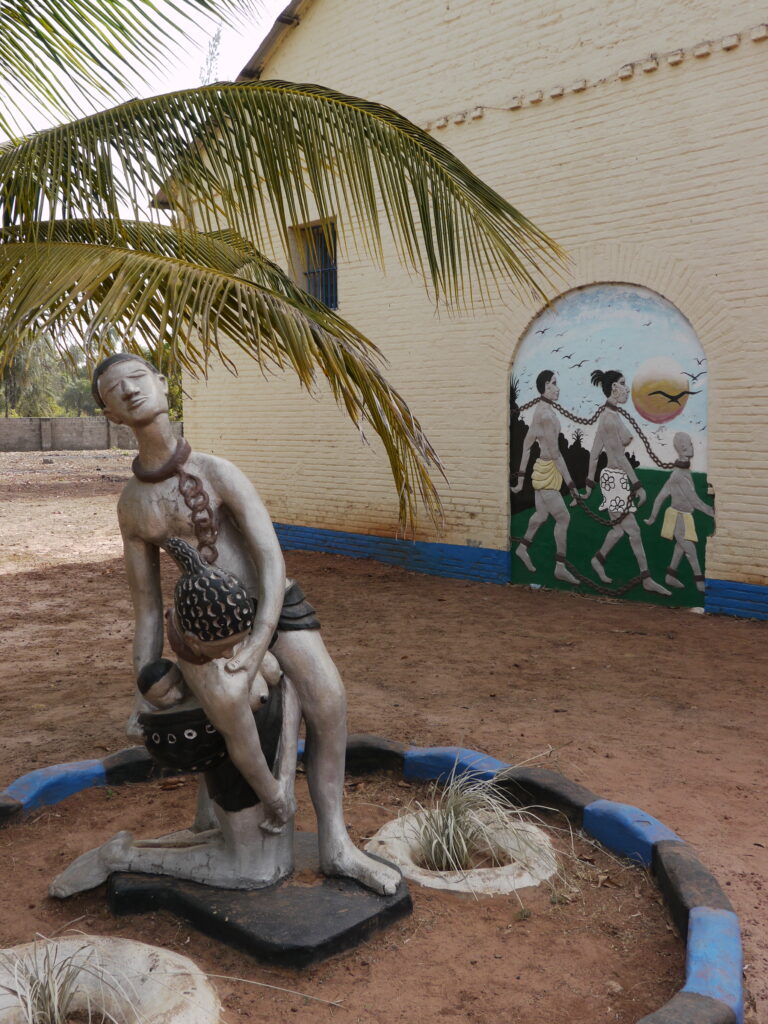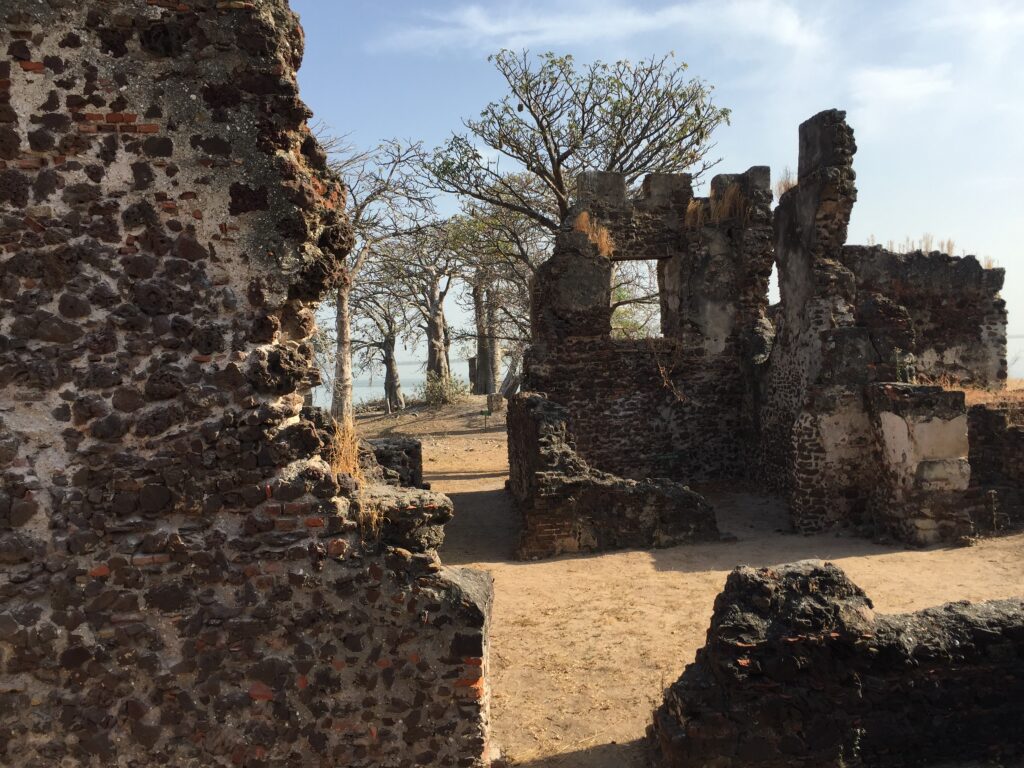
Approximately 19 miles up the Gambia River is a small island, one of two UNESCO World Heritage Sites in The Gambia. Throughout history, this island has been one of the most important waterways for trade from interior Africa. It served as a hub for Arab and Phoenician as well as European powers to trade with interior Africa. The island has had many names. The Portuguese called it St. Andrew’s Island for a sailor called Andrew they buried there and, later, the British called it James Island, referring to the fort they rebuilt fort and named after the Duke of York and future King of England, James II.
Roots
In 2011 it was given the Gambian name Kunta Kinteh Island. Kunteh Kinteh is, of course, a fictional character from American author Alex Haley’s 1976 bestselling novel Roots. The novel tells the story of 17-year-old Kunta Kinteh, a Gambian who is sold into slavery, and his American descendants. The central character is based on Haley’s real-life ancestor. The best-seller was quickly made into two television series, Roots in 1977 and Roots: the Next Generation in 1979.

The Many Sites of Kunta Kinteh
According to the UNESCO World Heritage Convention, the sites on and near the island represent “a continuum stretching from pre-slavery times to independence.” Together, the Kunta Kinteh Island and Related Sites span the 15th – 19th centuries. So, just what are these sites? There are actually seven components. The island itself contains the remains of Fort James and related buildings, including a slave house and governor’s kitchen. The village Albreda has two, a Portuguese chapel and a colonial warehouse. San Damingo is the remains of a small Portuguese settlement, and the village Juffureh has the Maurel Frères Building. Finally, there are 19th century Fort Bullen and the Six-Gun Battery. Not all of these sites are located on small, eroding Kunta Kinteh Island, however. The villages are located nearby on the north side of the Gambia River, while the fort and battery are on either side of the river’s mouth.
Fort and Battery
The forts, James and Bullen, are especially unique as a pair. The Portuguese acquired the island and began building the original fort by 1456. Since then, it has been destroyed and rebuilt several times. Today, like most of these sites, it remains a ruin. Built to protect the region’s valuable trade – gold and ivory as well as slaves – this fort represents the earliest moments of the trans-Atlantic slave trade and the three centuries it continued. Fort Bullen, on the other hand, along with its companion battery, was built after the Abolition Act of 1807, when the British banned the slave trade throughout their empire. So, while Fort James was built to uphold the slave trade, the battery (built 1816) and fort (built ten years later, in 1826) were built expressly to suppress the slave trade and to prevent the transportation of slaves from Africa via the Gambia River.

Albreda village contains the only sites that have been restored; both fort and battery are ruins today. During World War II, however, Fort Bullen was used again as a strategic observatory and artillery port. That site therefore represents more modern conflicts that have spilled from Europe across the African continent.
Want to know more?
Check out the UNESCO World Heritage description!
Check out this Africa World Heritages article!
Further Sources:
